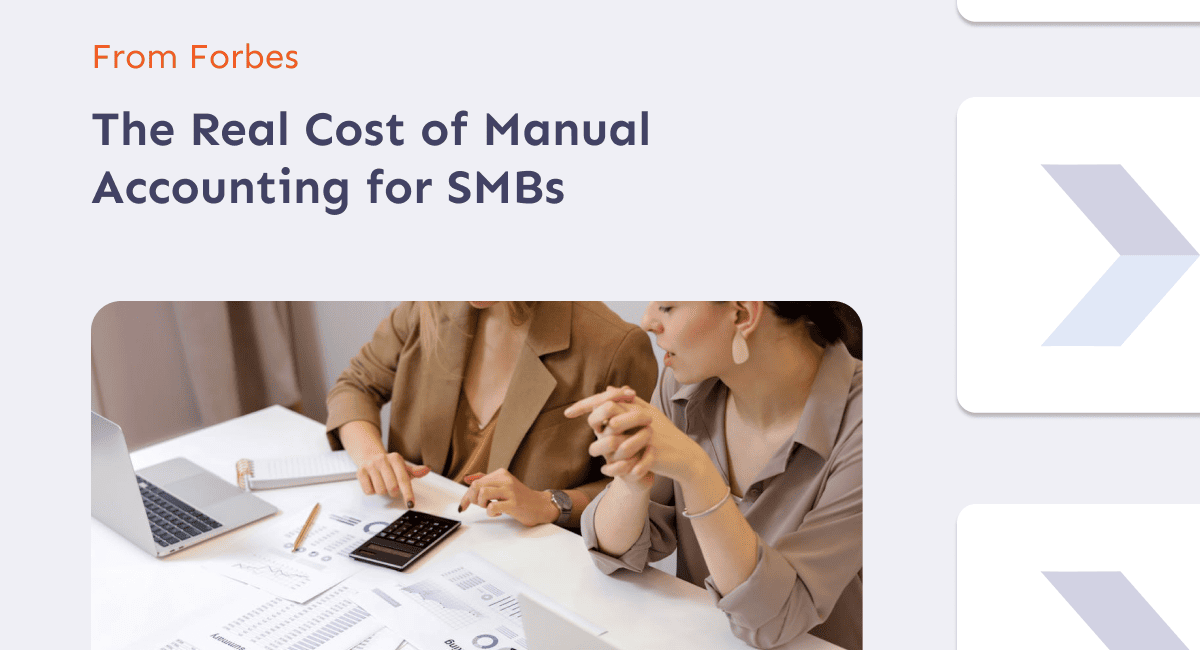As a financial professional, approaching clients about new service offerings can be easier said than done, so understanding the core value behind your offerings is crucial for reaching a successful outcome. Things are no different from having “the talk” about cash flow consulting services, so we made this quick guide to make your life easier when onboarding clients to new ways of improving their small business’s (SMBs) financial health.
Getting started
It’s probably best to start by having a clear picture of what cash flow consulting really means. Overall, it means guiding clients on what they are doing right and what they are doing wrong to maintain a healthy cash inflow and outflow balance in the short, mid and long terms. This can translate into going through cash in and cash out data, AR and AP, payroll, bank feeds, financial statements, expenses, and revenue.
Right, you are very used to going over these data points, nothing new there. But a client need that you may not be fulfilling yet is to clearly see KPIs in visual ways to instantly understand what that data really means to their bottom line and, most importantly, what steps to take to improve it.
The hands-on approach
Advisors will review a business’ cash flow statement on a routine basis. The time period, like holding monthly recaps, depends on the specific needs of each business. If a business doesn’t have a cash flow statement, their advisors will either use simple accounting tools to create a basic statement or take advantage of the free cash flow forecasting offered by Forwardly.
Through this process, a business can pinpoint when most of their regular bills and responsibilities, like payroll, hit the books — in comparison to when the bursts of revenue come in. For example, for a SaaS company, this would be when the subscription fees are processed.
Data-driven decisions
Financial planning and business strategies are only as good as the data that drives them. Both require constant refinement, which you should always base on performance metrics and data. If you’re not iterating on your business tactics, you’re falling behind. And if you’re not using data to inform and evaluate decisions, you’re charting a course in the dark.
Confidence comes from knowing you’ve done all the hard work and you’re ready for what lies ahead. When you’re wearing the many hats of a business owner, every tool that gives you an advantage is a win. This is why we’ve created our cash flow forecast and analysis in the first place. To empower you with the information needed to point your business in the right direction.
Bad cash flow bankrupts businesses
More than half of small businesses never make it past the first five years. The main culprit is cash flow. It’s not that these businesses don’t understand that they need to have the right amount of money to meet their financial obligations.
Instead, they just don’t have the correct resource guides, technologies, and processes in place. By helping your clients master cash flow management, you’ll be teaching them vital survival skills. You’ll also be building mutually respectful long-term relationships.
Cash flow consulting builds value
Complying with regulations and paying taxes are services that business owners see as have-to-dos. Accountants who take the creation of financial statements one step further by producing cash flow forecasts are transforming routine tasks into recurring, value-added services.
Rather than merely reporting results, cash flow consulting is a key component in business growth. Some advisors even set up monthly consultation calls or video conferences with their clients to discuss goals and objectives — literally becoming voices in the business decision-making process.
Better cash flow builds confidence
As you work with your clients reviewing cash flow, setting goals, controlling costs and planning for future investments and opportunities —you’re not only improving the business’ financial health, you’re also bolstering the owner’s confidence. As you go through a cash flow forecast, especially the day-to-day costs involved in operational cash flow, you get a better sense of where the client’s priorities lie, which concepts they understand the most and the areas that need the most improvement.
Know your cash flow
A dollar’s a dollar. There’s a reason why cash flow is an unbiased and universal measure of business performance. It’s a make-or-break metric for businesses of every size — but it’s particularly crucial for SMBs whose survival depends on the income earned from operational cash flow.
When these businesses fail, more than half, 60% cite issues with cash flow as a root cause. Furthermore, most SMBs only have enough working capital on hand to cover 27 days of expenses. However, businesses that monitor cash flow every month have an 80% survival rate.
The facts speak for themselves. Keeping an eye on your cash flow shows you what’s actually going on within your business. Your cash flow statement and cash flow forecast tell you: where the money coming in, where’s it’s going out, and the rate at which it’s moving in either direction.
Identify strengths and weaknesses
Spreadsheets only tell a part of your company’s story — especially if you’re a visual learner, as most people are. Plus, a few spreadsheets can show you the true story of your company’s efficiencies or clearly illustrate your revenue cycles. After all, the best way to notice a pattern is to see it mapped out in graphs and charts — rather than numbers and percentages. Routinely performing a cash flow forecast and analysis can help you see:
- If there are concerns within your accounts receivable and payable processes, such as consistently late payments or mistimed cycles.
- Where your efficiencies and inefficiencies lie, in terms of:
- How your revenue correlates with expenses.
- Your best sources of recurring revenue.
- Your last effective income streams.
- How to plan for seasonal upturns and downturns.
- Profit & Loss
Determine your financing needs
When you have a good handle on your cash flow, you not only know where your business stands, you also have a pretty strong idea of where it’s headed. As a result, a cash flow forecast helps you better plan for when you’ll need funding to seize upon growth opportunities or simply upgrade or maintain your current status quo.
To put it simply, when you know how much money you’re earning, how much you are spending and when this money is being paid to you or is due to others, you have a much better handle on when you’ll need access to more cash or be able to repay lenders. No one likes a fire sale or being at the mercy of high-risk lenders.
Being prepared means knowing your choices. It gives you the chance to learn about and choose from either traditional or non-traditional lending options (or a mixture of both long- and short-term options). In fact, traditional lenders, such as banks, will even take a cash flow forecast into consideration as part of the application process. And once you’ve acquired financing, forecasting will help stay on track with your repayments.
The bottom line
The main takeaway here is: take action! Start by mapping the clients that would most likely benefit from cash flow consulting services. Then tailor the approaches shared in this guide to each one of them and include some visual forecasts straight out of the Forwardly by connecting the accounting software. And if your clients are looking to streamline their accounts receivable and payable, Forwardly can help with that as well. See how things go, make any tweaks necessary to accommodate your client’s needs and close the deal for an affordable price. Rinse, repeat and see your firm’s bottom line improving with steady results.
 Back to Blog
Back to Blog


